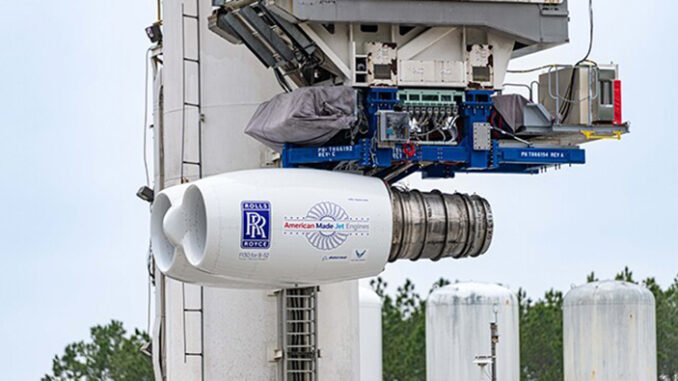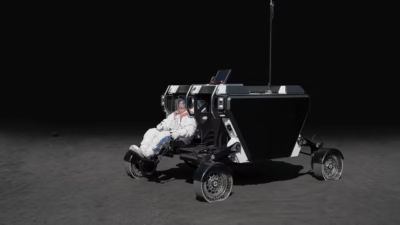Power and Prestige: Rolls-Royce F130 Engine Overview
Rolls-Royce, a name synonymous with luxury and excellence, has long been celebrated for engineering perfection across multiple industries. While the brand commands respect in automotive circles, its aerospace division represents the pinnacle of aviation technology. The Rolls-Royce F130 engines serve as a testament to their unparalleled engineering prowess, having been selected to power the legendary B-52 Stratofortress bomber fleet for decades to come. In this comprehensive exploration, we unveil the remarkable features and capabilities of the Rolls-Royce F130 engines, showcasing the extraordinary power and prestige these exceptional machines possess.
Uncompromising Power
The Rolls-Royce F130 engines represent a marvel of modern aerospace engineering, delivering extraordinary power and performance that sets new standards in military aviation propulsion. These advanced turbofan engines are specifically designed to propel the iconic B-52 Stratofortress, providing the thrust necessary for swift acceleration, extended range, and impressive operational capabilities across the aircraft’s entire mission envelope.
With their cutting-edge technology and meticulous craftsmanship, the F130 engines deliver an exceptional power-to-weight ratio, significantly enhancing aircraft performance. Built on the proven BR725 commercial engine platform, these powerplants bring decades of operational excellence from business aviation into the military sphere, ensuring an unrivaled combination of power, reliability, and efficiency for both aircrew and mission planners.
Advanced Engineering Excellence
The F130 engines embody Rolls-Royce’s unwavering commitment to pushing the boundaries of aerospace innovation. The world-class engineers behind these engines have incorporated state-of-the-art technologies and advanced materials, resulting in power plants that deliver not only exceptional thrust but also remarkable fuel efficiency—a critical consideration for long-range strategic bomber operations.
The sophisticated design and construction techniques employed in the F130 engines contribute to significantly reduced emissions compared to the legacy TF33 engines they replace. This enables them to be environmentally progressive while maintaining the uncompromising performance standards required by military operations. Advanced digital engine controls, health monitoring systems, and predictive maintenance capabilities ensure optimal performance throughout the engine’s operational life, representing a quantum leap forward in propulsion technology.
Reliability and Durability
Rolls-Royce has earned its sterling reputation through an unwavering commitment to quality and reliability, and the F130 engines exemplify this heritage. Rigorous testing procedures and stringent quality control measures ensure that each engine meets the highest standards of aerospace excellence before entering service with the United States Air Force.
The F130 engines are engineered to withstand the most demanding operating conditions encountered in military aviation, from Arctic cold to desert heat, featuring robust components and exceptionally durable construction. Each engine benefits from millions of operational hours accumulated by its commercial BR725 predecessor, providing a proven reliability foundation that translates into increased mission success rates, enhanced safety, and complete confidence for flight crews operating these strategic assets.
This battle-tested reliability reduces maintenance burdens, increases aircraft availability, and ensures that the B-52 fleet remains mission-ready when national security demands it most.
Enhanced Efficiency and Operational Economy
Beyond raw power and legendary reliability, the F130 engines prioritize fuel efficiency and operational economy—critical factors in military aviation where every gallon of fuel represents both cost and strategic capability. Rolls-Royce engineers have implemented breakthrough features and technologies to optimize fuel consumption, potentially reducing fuel usage by approximately 30% compared to previous engine generations.
These engines incorporate intelligent systems that continuously monitor performance parameters and adapt to changing atmospheric conditions, flight profiles, and mission requirements. This results in optimized fuel consumption, extended mission range, reduced environmental impact, and substantially lower operational costs over the engine’s service life.
The enhanced efficiency of the F130 engines makes them a strategic choice for the Air Force, maximizing operational capability while minimizing lifecycle costs and reducing the logistical footprint required to support global operations. This efficiency directly translates to extended range, longer loiter times, and enhanced mission flexibility for the B-52 fleet.
Future-Ready Design Philosophy
As aerospace technology continues to evolve rapidly, Rolls-Royce remains at the forefront of innovation, ensuring its engines remain relevant for decades. The F130 engines feature a forward-thinking modular design that enables future upgrades and enhancements as new technologies emerge, materials advance, and operational requirements evolve.
This progressive approach ensures that the engines can readily adapt to changing military needs, evolving environmental regulations, and emerging technological capabilities. The open architecture design philosophy guarantees longevity and relevance in the rapidly transforming aviation landscape, supporting the B-52’s planned service life through 2050 and potentially beyond.
Digital twin technology, artificial intelligence integration, and compatibility with sustainable aviation fuels position the F130 as a truly future-proof propulsion solution that will serve multiple generations of aircrew and military planners.
Strategic Impact on Military Aviation
The selection of the Rolls-Royce F130 engines for the B-52 Commercial Engine Replacement Program (CERP) represents more than just a propulsion upgrade—it’s a strategic investment in America’s long-range strike capability. These engines ensure that the venerable Stratofortress remains a credible deterrent and effective combat platform for the next three decades.
The program creates high-value aerospace manufacturing jobs, strengthens the U.S.-U.K. defense partnership, and demonstrates how leveraging proven commercial technology can deliver military capability more efficiently than developing entirely new systems. Production centered at Rolls-Royce’s Indianapolis facility reinforces American manufacturing while benefiting from global aerospace expertise.
Conclusion
The Rolls-Royce F130 engines exemplify the pinnacle of aerospace engineering excellence, representing a perfect synthesis of commercial aviation efficiency and military operational requirements. With their exceptional power output, advanced technology, legendary reliability, and superior fuel efficiency, they have rightfully earned their place as the propulsion system of choice for one of aviation’s most iconic aircraft.
These engines provide not only unparalleled performance but also reflect Rolls-Royce’s enduring commitment to innovation, quality, and environmental responsibility. The F130 engines serve as a powerful testament to Rolls-Royce’s century-long legacy as a leader in aerospace propulsion, ensuring that both the company’s reputation and the B-52 Stratofortress remain relevant, capable, and prestigious well into the 21st century.
As these magnificent engines prepare to thunder through the skies for decades to come, they carry forward the power and prestige that have made Rolls-Royce an enduring symbol of engineering excellence across generations.




